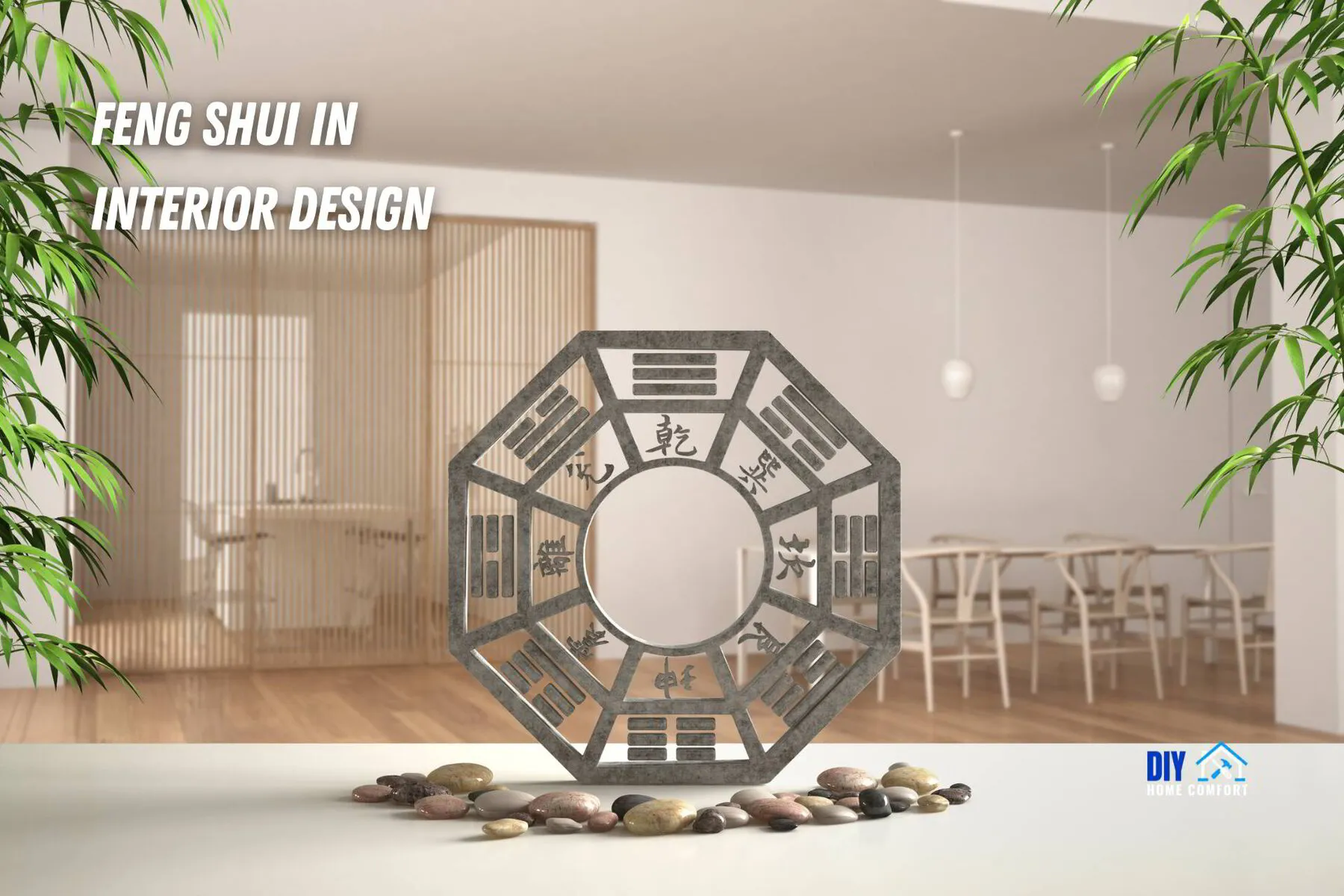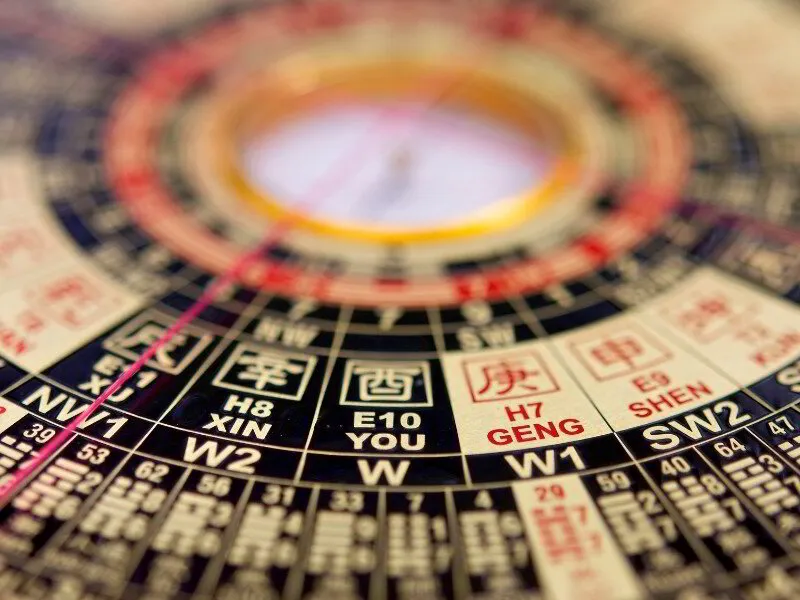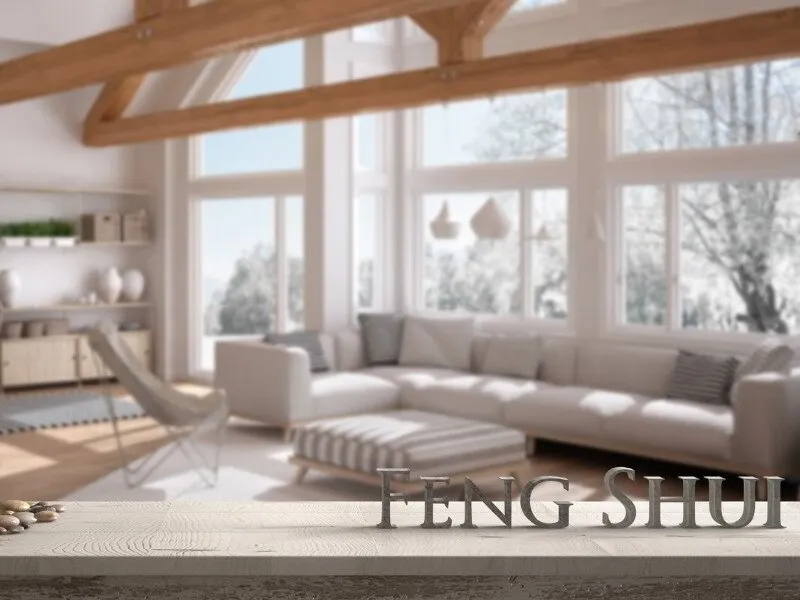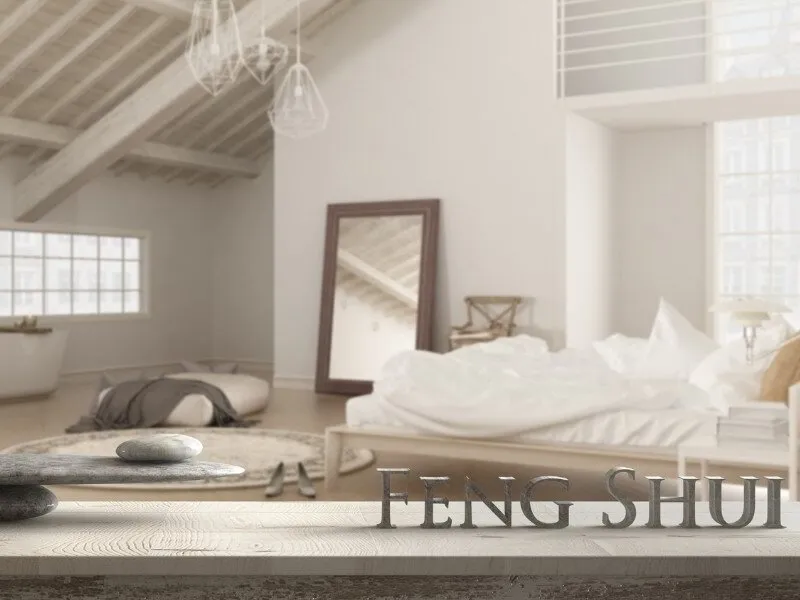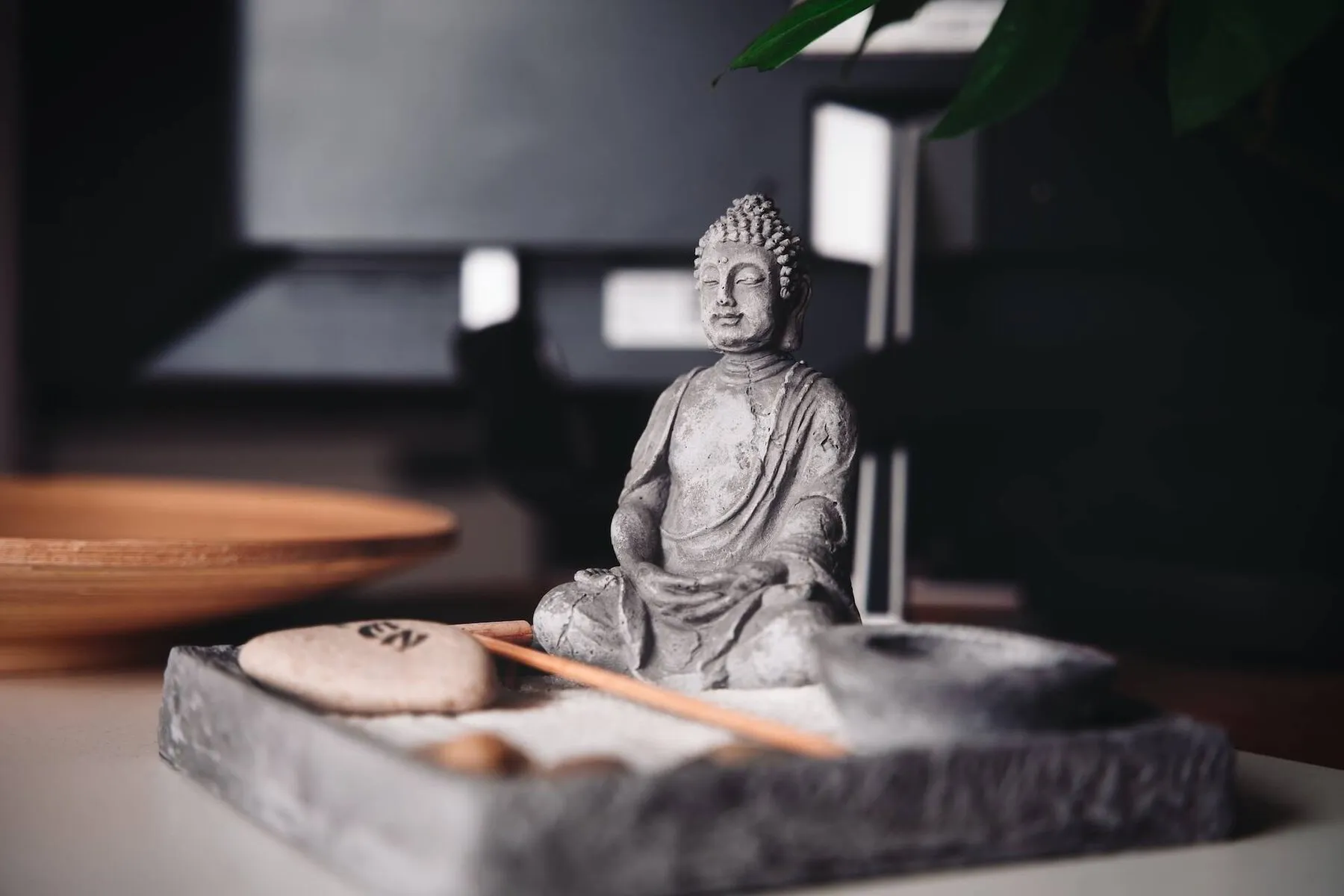Are you seeking a way to bring harmony and tranquility into your living space?
Look no further than the ancient art of Feng Shui.
By harnessing the power of energy flow, Feng Shui allows you to create an environment that promotes positive vibes and overall well-being.
In this article, we will delve into the basics of Feng Shui, explore its importance in interior design, discuss the significance of Feng Shui design principles and elements, and provide room-by-room tips to help you achieve the perfect balance in your home.
📘 Key Takeaways
- Feng Shui enhances positive energy, harmony, and well-being in spaces.
- Core principles include decluttering, balancing five elements, and maximizing natural light.
- Colors and furniture placement influence energy flow and mood.
- "Commanding position" optimizes furniture placement for empowerment and control.
- Incorporating wood, fire, earth, metal, and water elements achieve balance and harmony.
Understanding the Basics of Feng Shui Interior Design
What Is Feng Shui?
Feng Shui, at its essence, is an ancient Chinese philosophy stemming from the idea of achieving a harmonious relationship with our surroundings.
It provides a framework for creating spaces that enrich both our physical and spiritual dimensions.
The roots of Feng Shui can be traced back to ancient China thousands of years ago.
It's built on the premise that everything in our environment carries an energy, or "Chi," which can be channeled positively to enhance our daily lives.
Practitioners of Feng Shui believe that the energy prevalent in our surroundings profoundly impacts every facet of our existence, from our health and relationships to our prosperity.
By effectively managing the flow of Chi, we can shape a space that bolsters and augments these life aspects.
A fundamental principle of Feng Shui is the Yin-Yang concept, symbolizing the equilibrium between contrasting forces—like light and darkness, masculine and feminine, or stillness and movement.
Maintaining a harmonious balance between these elements is critical for encouraging a positive energy flow.
Further extending this philosophy, Feng Shui also integrates the five elements: wood, fire, earth, metal, and water.
Each element embodies distinct energies and can be introduced into your design to foster a balanced and harmonious environment.
The Philosophy Behind Feng Shui
According to Feng Shui, our surroundings reflect and influence our internal state of being.
By arranging our living spaces to promote positive energy flow, we can create an environment that supports our goals, relationships, and overall happiness.
When it comes to Feng Shui, every object and arrangement in your home has a purpose.
For example, the placement of your bed can affect your sleep quality and well-being.
By positioning your bed in a way that allows for a clear view of the door, you can create a sense of safety and security, promoting a restful night's sleep.
Another important aspect of Feng Shui is the use of color.
Different colors have different energies and can evoke different emotions.
For example, warm colors like red and orange are associated with passion and energy, while cool colors like blue and green are associated with calmness and tranquility.
By incorporating the right colors into your space, you can create the desired atmosphere and enhance the energy flow.
Core Principles of Feng Shui
In order to practice Feng Shui effectively, it is important to understand its core principles.
These principles guide the arrangement of furniture, decor, and color choices in your living space.
The first principle is decluttering and organizing your home.
Clutter not only obstructs energy flow but also creates mental and emotional distractions.
By removing unnecessary items and organizing your space, you create room for positive energy to flow freely.
The second principle is balancing the five elements of Feng Shui - wood, fire, earth, metal, and water.
Each of these elements represents different energies and can be incorporated into your design to create a harmonious environment.
For example, you can introduce the wood element by adding plants or wooden furniture or incorporate the water element by placing a small fountain or a mirror near a water source.
Another important principle is the use of natural light.
Natural light is a powerful source of positive energy and can uplift the mood of a space.
Maximizing natural light in your home can create a bright and inviting atmosphere.
Lastly, the principle of flow is crucial in Feng Shui.
Energy, or chi, needs to flow freely throughout your space for optimal balance and harmony.
Avoid placing furniture in a way that obstructs the natural flow of energy, and create clear pathways for energy to move around.
Creating Balance with Feng Shui Interior Design
One of the key aspects of Feng Shui in interior design is achieving a sense of balance.
This can be done by arranging your furniture and decor to create harmony within the space.
Ensure that there is a balance between yin and yang elements, as well as a balance between the five elements.
For example, place a water feature, such as a small fountain, in the north area of your living room to represent the element of water.
Combine this with a wooden coffee table to introduce the element of wood, creating a balance between water and wood energies.
In addition to furniture placement, color choices can contribute to a space's overall balance.
Incorporating a variety of colors that correspond to the five elements can create a visually appealing and energetically balanced environment.
For instance, using shades of blue for water, green for wood, and earthy tones for earth can enhance the harmony within your home.
The Importance of the Commanding Position
In Feng Shui, the "commanding position" is a fundamental principle that refers to the optimal placement of furniture to enhance the flow of energy.
This position is designed to empower you and provide a sense of control over your environment.
The commanding position is often associated with the placement of significant pieces of furniture, such as your bed or desk.
The idea is to position these items in a way that allows you to see the entrance to the room without being directly in line with it.
This arrangement offers protection, empowers you, and enables you to be in command of your space.
For instance, when arranging your bed, the commanding position would be a spot where you can see the bedroom door but aren't directly aligned with it.
Similarly, for your desk, the command position would allow you to have a clear view of the room's entrance upon sitting.
In essence, the commanding position in Feng Shui is about creating a space that supports balance, harmony, and positive energy flow in your environment.
Enhancing Energy Flow in Your Home
Another key aspect of Feng Shui is enhancing energy flow within your home.
This can be achieved by creating a clear, uncluttered path for energy to circulate freely.
Arrange your furniture in a way that allows for easy movement and avoids blocking doorways or walkways.
In addition to furniture placement, the use of lighting can also contribute to the flow of energy in a space.
Natural light is highly beneficial, so consider incorporating large windows or skylights to bring in more sunlight.
If natural light is limited, you can utilize artificial lighting strategically to create a warm and inviting atmosphere.
Furthermore, the inclusion of plants and natural elements can enhance the energy flow in your home.
Indoor plants add a touch of nature, purify the air, and create a sense of tranquility.
Choose plants that thrive in your specific environment and place them strategically throughout your living space to improve the overall energy.
In addition, consider the use of mirrors to reflect light and energy throughout your living space.
Mirrors can also be strategically placed to expand the size of a room and create a sense of openness.
By reflecting natural light and positive energy, mirrors can amplify the overall energetic balance in your home.
Incorporating Feng Shui principles into your interior design allows you to create a harmonious and balanced living space that promotes positive energy.
Remember, the goal is to create a sanctuary where you can relax, recharge, and thrive.
Feng Shui Elements and Their Significance
The five elements - wood, fire, earth, metal, and water - each hold their own significance and can be utilized to enhance the energy of your living space.
Understanding and incorporating these elements into your design can bring balance and harmony to your home.
Feng Shui believes that our surroundings' energy, or chi, greatly influences our well-being.
By harnessing the power of these elements, we can create a harmonious environment that promotes positive energy and supports our physical and emotional well-being.
Understanding the Five Feng Shui Elements
Wood
Wood represents growth, vitality, and new beginnings.
It is associated with spring's energy and symbolizes life's upward movement.
In Feng Shui, wood is believed to promote creativity, inspiration, and flexibility.
It is often associated with green and represented by tall, vertical shapes.
Fire
Fire represents passion, energy, and transformation.
It is associated with the energy of summer and symbolizes the warmth and light that fuels our desires and ambitions.
In Feng Shui, fire is believed to promote motivation, drive, and enthusiasm.
It is often associated with red and orange and represented by triangular shapes.
Earth
Earth represents stability, grounding, and nourishment.
It is associated with the energy of late summer and symbolizes the solid foundation that supports our lives.
In Feng Shui, earth is believed to promote stability, security, and abundance.
It is often associated with brown and yellow and represented by square shapes.
Metal
Metal represents clarity, precision, and focus.
It is associated with the energy of autumn and symbolizes the strength and resilience that allows us to let go and move forward.
In Feng Shui, metal is believed to promote mental clarity, organization, and efficiency.
It is often associated with white and gray and represented by circular shapes.
Water
Water represents flow, abundance, and tranquility.
It is associated with the energy of winter and symbolizes the calm and adaptability that allows us to navigate through life's challenges.
In Feng Shui, water is believed to promote relaxation, intuition, and emotional well-being.
It is often associated with blue and black and represented by wavy or irregular shapes.
How to Incorporate Feng Shui Elements in Your Design
To incorporate feng shui into your design, start by identifying the areas of your home that align with each element.
For example, your living room's east and southeast areas represent the wood element.
You can introduce this element by incorporating wooden furniture, plants, and vibrant colors such as green or brown.
The presence of plants adds a touch of nature, improves air quality, and brings a sense of vitality to the space.
Additionally, the texture and warmth of wooden furniture create a grounding and nurturing atmosphere.
Similarly, the south area represents the fire element so that you can introduce it with candles, artwork depicting flames, and vibrant red or orange colors.
The flickering flames of candles create a cozy and inviting ambiance, while the bold colors stimulate energy and passion.
For the earth element, which is associated with the center of your home, you can incorporate it through earthy tones, such as brown and yellow, in your decor.
Earthy textures like clay pots, stone sculptures, or even a cozy rug can bring a sense of stability and grounding to the space.
Metal can be introduced through metallic accents, such as stainless steel appliances or silver decor pieces.
These elements add a touch of sophistication and promote clarity and focus.
You can also consider incorporating circular shapes in your feng shui design to represent the metal element, such as round mirrors or metallic sculptures.
Lastly, the water element can be incorporated through the use of water features like fountains or aquariums.
The gentle sound of flowing water creates a soothing and peaceful atmosphere, while the reflective surface of water symbolizes abundance and prosperity.
You can also introduce the water element through the use of blue or black decor accents, such as pillows or artwork.
Understanding the significance of each Feng Shui element and incorporating them into your feng shui design allows you to create a space that looks aesthetically pleasing and supports your overall well-being.
Remember, the key is to find a balance between these elements and create a harmonious flow of energy throughout your home.
Room-by-Room Feng Shui Interior Design Tips
Feng Shui Interior Design for the Living Room
The living room is often the heart of the home, where family and friends gather.
To ensure positive energy flow in this space, arrange your furniture to encourage conversation and connection.
Use comfortable seating and soft lighting to create a warm and inviting atmosphere.
Remove any electronic devices or clutter that may disrupt the flow of energy.
Incorporate elements such as plants, artwork, and natural textiles to bring nature indoors and create a sense of harmony.
Feng Shui for the Bedroom
Your bedroom should be a sanctuary for rest and rejuvenation.
Position your bed to allow a clear view of the door, symbolizing safety and control.
Avoid placing the bed directly under a window, as it may disrupt energy flow.
Create a peaceful atmosphere with calming colors, soft lighting, and textures that promote relaxation.
Keep electronic devices to a minimum and invest in high-quality bedding to promote restful sleep.
Feng Shui for the Kitchen
A feng shui kitchen is a space where nourishment and abundance are celebrated.
Keep your kitchen clean and organized, as this promotes a positive energy flow.
Avoid cluttered countertops and ensure that appliances are in good working order.
Use colors that stimulate the appetite, such as warm tones like red or orange.
Incorporate natural materials like wood and stone to bring in the earth element.
Finally, keep your stove clean and in good condition, as it represents wealth and abundance in Feng Shui.
Dealing with Clutter and Disorganization
One of the biggest challenges in Feng Shui design is dealing with clutter and disorganization.
Start by decluttering your living space and getting rid of items that no longer serve a purpose.
Find storage solutions to keep your belongings organized and hidden away.
Regular cleaning and tidying up will help maintain a clean and positive energy flow.
Remember, a clutter-free environment promotes physical well-being, mental clarity, and emotional calmness.
Addressing Negative Energy Spots
Certain areas of your home might sometimes have negative energy spots.
These spots can be caused by sharp corners, exposed beams, or other architectural features.
To address these spots, use Feng Shui remedies such as placing a crystal or a plant in the affected area.
Additionally, consider using colors, artwork, or mirrors to redirect the energy and harmonize the space.
Addressing these negative energy spots can create a more balanced and harmonious living environment.
Final Thoughts on Feng Shui Interior Design
By embracing the principles of Feng Shui in your interior design, you can create a beautiful living space that promotes good energy.
By understanding the basics of Feng Shui decorating and interior design, incorporating the five elements, and following room-by-room tips, you can unleash positive energy and create a sanctuary that nurtures your well-being.
Remember, your living space is a reflection of yourself, so take the time to transform it into a harmonious and inviting atmosphere.
Embrace the power of Feng Shui and experience the positive difference it can make in your life.
And if you want to learn more about interior design and its exciting possibilities for your home, don't forget to check out the rest of our interior design blog!
Thanks for reading!
📘 Related Reading: The 7 Elements of Interior Design in 2023
Lara Harding
Lara is a supporting author @ DIY Home Comfort. She's an experienced interior designer and decorator and a full-time mom. You can find out more about her here.
